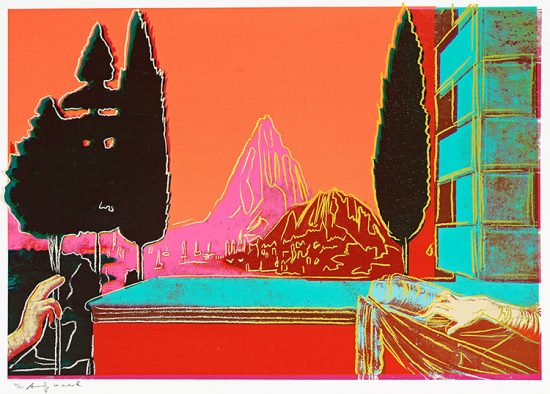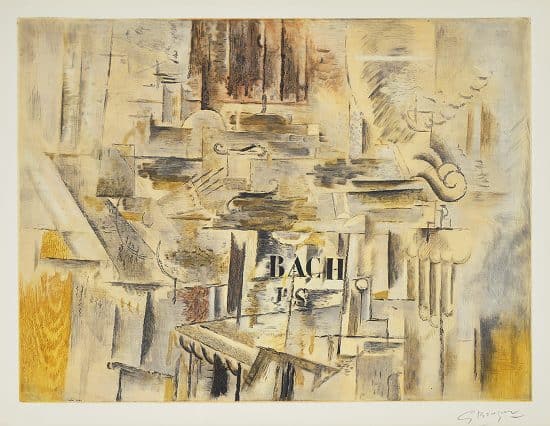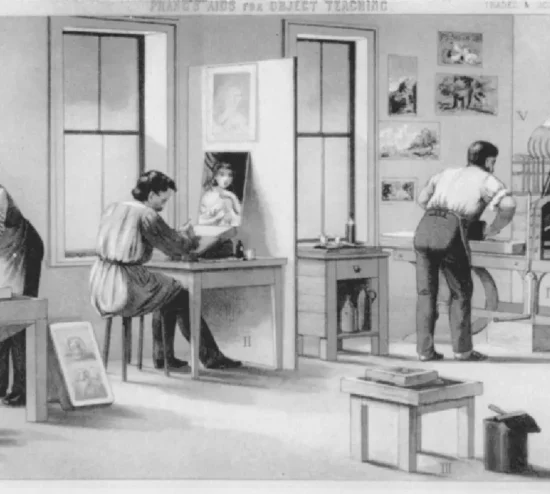The art world has always had a mantra of out with the old, in with the new- and back again. In the mid 1800’s the Pre-Raphaelite movement was born out of desire for change, freedom of choice in painting, and a little rebellion while returning their gaze to the masters of natural human representation. The perpetrators of such a unique movement were seekers of change. Their ideals lay within the halls of olden times whilst striving to renew the naturalistic and botanical themes to their works.
The style of the pre-raphaelite Brotherhood gathered inspiration from old master artists and their bold color choice. Much of the British Royal Academy was filled with genre paintings of everyday peasantry and frolicking about, but the Pre-Raphaelites wanted to indulge in the excitement of nature and beauty and death. They decidedly rejected the dullness of everyday scenes and embraced the caress of drama in their painting. Techniques of bold, rich color -bordering on gaudy- that create luster and decisiveness within the style grew to be one of the most profound characteristics of the Pre-Raphaelites.
Ophelia, 1851. Sir John Everett Millais
The Brotherhood believed in what painters, artists, and poets were doing before the influence of Raphael in the Renaissance. They desired a more natural and symbolic style of poetry, art, and sculpture. The symbolism found in The Awakening Conscious for example, contains much about infidelity, virtue, and the vulgarity of man. Other paintings, such as Ophelia by Millais, hold a literary significance that can only be translated so well from prose to painting by utilizing the romantic feel of Pre-Raphaelite art.
Compared to other paintings in the Royal British academy, the Brotherhood returned to the notions of realistic beauty found in nature and humanity.(1) Idealistic forms of humans, such as the style of Raphael in the Late Renaissance, were no longer their goal. Pre-Raphaelites were drawn towards the poetic side of art. Their beliefs were that of Naturalism(2) which resonates with the realistic ideas of humans instead of picture-perfect figurines.
Taking cues from Leonardo da Vinci and Verrocchio, they painted what they saw in front of their faces. Painting en plein air was in vogue, and lended a helping hand in their quest for portraits of humanity. The painters of the movement relied upon models that were well-known to them, such as their family members or members of their own households.(3) By using regular people, they took advantage of their models' wear and tear on their faces and bodies from sun damage, age, and other imperfections that would not appear on a professional model in the same way. Classic models were simply not considered in these roles.
“Pre-Raphaelite paintings are today seen as uncomplicatedly beautiful images. But when they were first painted in the mid 19th century, they were regarded as assaults on the eye, objectionable in terms of their realism and morally shocking.”
The Tate
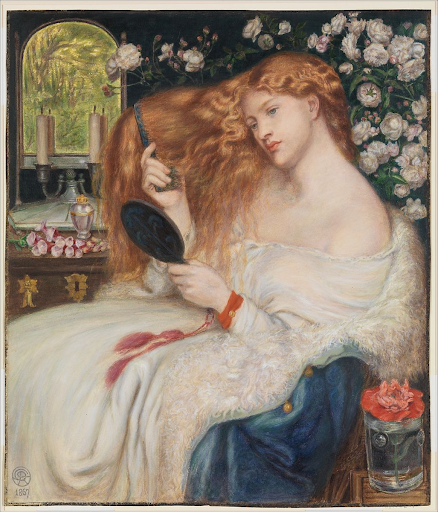
The prominent painters of the Pre-Raphaelite Brotherhood are William Holman Hunt, Dante Gabriel Rossetti, and John Everett Millais- all three of whom have contributed to the art world significantly. Although there are others within the Pre-Raphaelite Brotherhood, these men represent the painters rather than the poets. Each with distinguishable technique within their movement, they have painted the times red with their motifs, symbols, and suggestiveness.
William Holman Hunt created one of the most horrendously shocking images of the 1850’s- The Awakening Conscious. This scandalous, crass society painting was absolutely torn apart for its lewd suggestions of feminine immorality whilst in the chamber of a married man. Of course, this also reflects the times, meaning the virginity of a woman was the norm for society, and the virtue of man was less considerable. The actual awakening in the picture is the young lady being “awoken” by the light highlighting her face and figure while her presumed lover is salaciously attempting to regain her attention to amuse his less-than-honorable desires. This is an epiphanic episode for the lady, which we can assess from the piano and the song sheets displayed upon the ground and the piano.(4)
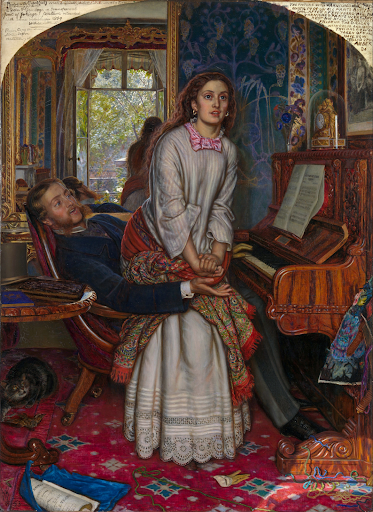
Having a mistress has always been taboo, but having one in the 1800’s was considerably worse than today. The image of these two lovers struck a chord in those who viewed it, as such topics were not discussed in general public circles. Hunt was true to his ideas of realistic situations in the sense that he did in fact create a scene in which many could put themselves in.
One of Dante Gabriel Rossetti’s most delicate paintings is that of Proserpine. Proserpine -Persephone in Greek- is based upon the myth of Hades from ancient mythology. The names Pluto and Hades can be switched depending on which version you prefer. The tragedy of the couple can be explained in the loneliness that both feel while spending eternity together. Rosetti even gives an account of the story himself here-
“After she was conveyed by Pluto to his realm, and became his bride, her mother Ceres importuned Jupiter for her return to earth, and he was prevailed on to consent to this, provided only she had not partaken of any of the fruits of Hades. It was found, however, that she had eaten one grain of a pomegranate, and this enchained her to her new empire and destiny. She is represented in a gloomy corridor of her palace, with the fatal fruit in her hand.” (5)
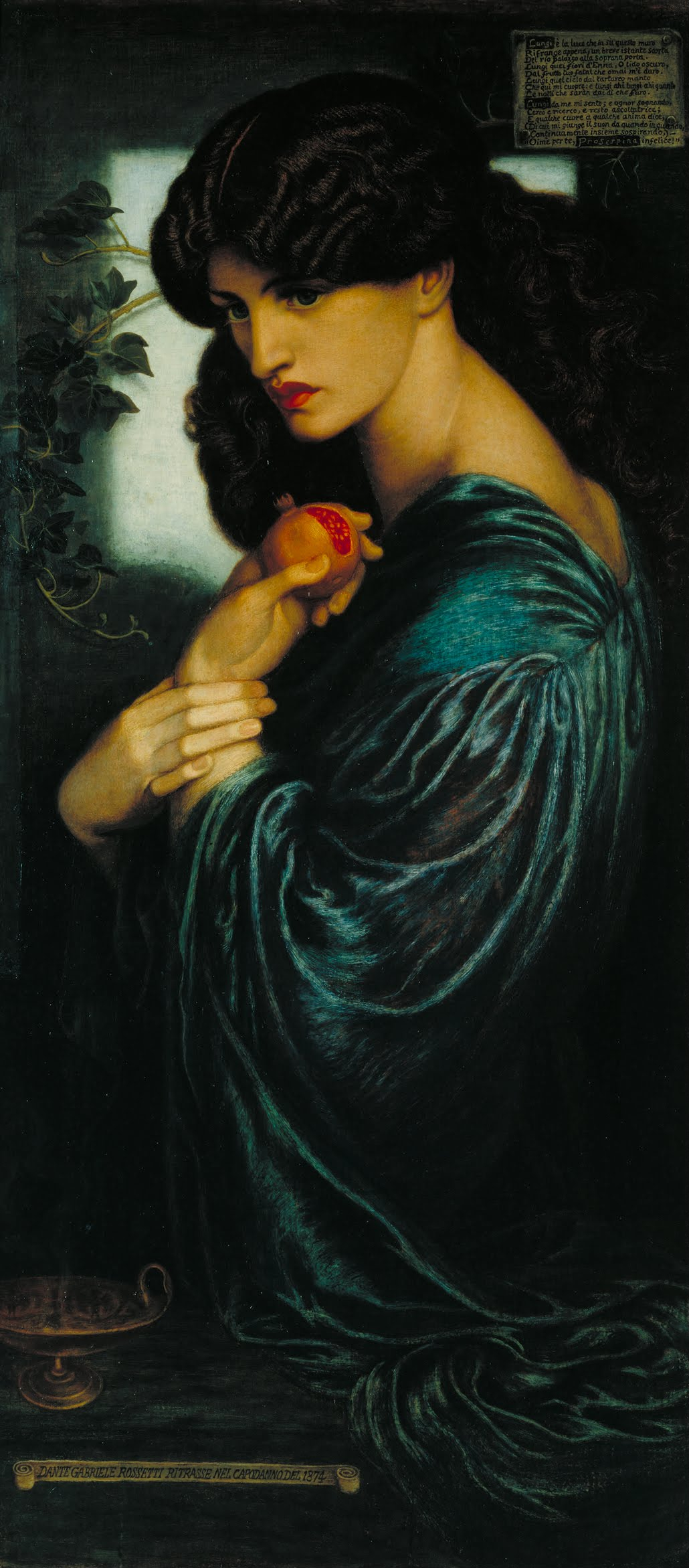
Proserpine is seen looking forlorn, probably about her chilling destiny, She contemplates her decision of eating the forbidden fruit, and seems as though she is admonishing herself further for her rashness. Rossetti paints her in dark tones, emphasizing her dark future while countering that with her pale complexion. The model is in fact one of his friends wives, who’s husband said her aura reflected that of an unhappy Proserpine. (6) Another famous Pre-Raphaelite painting also contains acquaintances as models.
John Everett Millais painted Christ in the House of His Parents, which created much uproar throughout the art world at the time. Although Jesus Christ, Mother Mary, or St. Joseph are common enough subjects in paintings, the style in which he painted The Virgin Mary became a scandal.(7) Instead of a lovely young maiden she is made out to be somewhat haggard, decrepit even. Mary is done an injustice by Millais, and the public was not going to let their stance be unknown.(8) The shocking depiction of Mary even led Charles Dickens to cry out that she was ‘horrible in her ugliness’.(9) Although a harsh critique, it shows the extent of the uproar that the Brotherhood created.
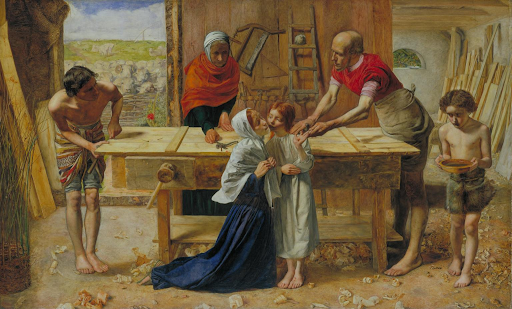
“Millais’s Christ in the House of His Parents… shocked critics with a hyper-realism perceived to be at odds with the sacred events portrayed.” (10)
Millais’ style can be seen as much more vibrant and almost crisp compared to the sfumato-like brush strokes of Rosetti. Hunt and Millais have that similarity between their two styles- harder lines that are less than easily lost in the blur of a background. Before Raphael, the High Renaissance and later medieval paintings(11) had Millais’ same softness of strokes. The latter’s definitive technique lent a distinct hand to its own devices.
The scandalous nature of the Pre-Raphaelite brotherhood is inherent in their need to rebel against the Royal British Academy, who had a select idea of what could be considered art, and what would be considered a low-class alternative.(12) The Royal British Academy had a set disposition towards the effects of the Victorian style, and did not take kindly to others questioning their authority regarding matters of Art.(13)
Pre-Raphaelite art’s existence in the public eye created scandal and outrage because they dared to defy the social norms of art. Continuously they created art that shocked and (eventually) reformed many minds on their ideal on appropriate subjects, ranging form fantastical to banal. The movement reigns supreme after so many long years because of the classic tale of rebelling against society.
The Pre-Raphaelite Brotherhood created a movement so distinguishable from others that they infiltrated painting, poetry, writing, and any other sort of artistic medium imaginable. It says something of human nature, seeing as though in the end we all want to be seen as we are instead of how we are supposed to be.
- The Art Story “The Pre-Raphaelites Movement Overview.” The Art Story, 2022, https://www.theartstory.org/movement/pre-raphaelites/ .
- The Art Story “The Pre-Raphaelites Movement Overview.” The Art Story, 2022, https://www.theartstory.org/movement/pre-raphaelites/ .
- Tate Tate. “Pre-Raphaelite.” Tate, 2022, https://www.tate.org.uk/art/art-terms/p/pre-raphaelite .
- Roe, Dinah. “The Pre-Raphaelites.” British Library, 15 May 2014, https://www.bl.uk/romantics-and-victorians/articles/the-pre-raphaelites .
- (W. Sharp, Dante Gabriel Rossetti: A Record and Study, London 1882, p.236)
- Tate
- Roe, Dinah. “The Pre-Raphaelites.” British Library, 15 May 2014, https://www.bl.uk/romantics-and-victorians/articles/the-pre-raphaelites .
- Tate. “'Proserpine', Dante Gabriel Rossetti, 1874.” Tate, 1 Jan. 1874, https://www.tate.org.uk/art/artworks/rossetti-proserpine-n05064 .
- Tate. “'Proserpine', Dante Gabriel Rossetti, 1874.” Tate, 1 Jan. 1874, https://www.tate.org.uk/art/artworks/rossetti-proserpine-n05064 .
- Roe, Dinah. “The Pre-Raphaelites.” British Library, 15 May 2014, https://www.bl.uk/romantics-and-victorians/articles/the-pre-raphaelites .
- Meagher, Jennifer. “The Pre-Raphaelites.” Metmuseum.org, Oct. 2004, https://www.metmuseum.org/toah/hd/praf/hd_praf.htm .
- The Art Story “The Pre-Raphaelites Movement Overview.” The Art Story, 2022, https://www.theartstory.org/movement/pre-raphaelites/ .
- The Art Story “The Pre-Raphaelites Movement Overview.” The Art Story, 2022, https://www.theartstory.org/movement/pre-raphaelites/ .

